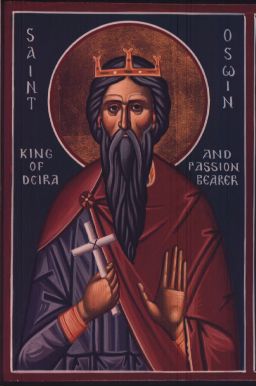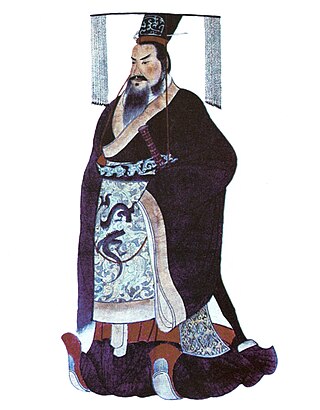Related Research Articles

Year 644 (DCXLIV) was a leap year starting on Thursday of the Julian calendar. The denomination 644 for this year has been used since the early medieval period, when the Anno Domini calendar era became the prevalent method in Europe for naming years.
The consort kin were the kin or a group of people related to an empress dowager or a consort of a monarch or a warlord in the Sinosphere. The leading figure of the clan was either a sibling, cousin, or parent of the empress dowager or consort.

The Guozijian, sometimes translated as the Imperial College, Imperial Academy, Imperial University, National Academy, or National University, was the national central institution of higher learning in Chinese dynasties after the Sui dynasty. It was the highest institution of academic research and learning in China's traditional educational system, with the function of administration of education.
The Cambridge History of China is a series of books published by the Cambridge University Press (CUP) covering the history of China from the founding of the Qin dynasty in 221 BC to 1982 AD. The series was conceived by British historian Denis Twitchett and American historian John King Fairbank in the late 1960s, and publication began in 1978. The complete History will contain 15 volumes made up of 17 books with volumes 5 and 9 consisting of two books each.

The production of beer in Tibet is a relatively recent phenomenon in Tibetan cuisine. The Chinese established the Lhasa Brewery Company in 1988, which is located in Lhasa.

In Chinese history, a Taishang Huang or Taishang Huangdi is an honorific and institution of a retired emperor. The former emperor had, at least in name, abdicated in favor of someone else. Although no longer the reigning sovereign, there are instances where the retired emperor became a power behind the throne, often exerting more power than the reigning emperor.
The Battle of Huoyi was fought in China on 8 September 617, between the forces of the rebel Duke of Tang, Li Yuan, and the army of the ruling Sui dynasty. Li Yuan, with an army of around 25,000, was advancing south along the Fen River towards the imperial capital, Daxingcheng. His advance was stalled for two weeks due to heavy rainfall, and he was met at the town of Huoyi by an elite Sui army of 20,000 men. Li Yuan's cavalry, under the command of his two eldest sons, lured the Sui out of the protection of the city walls, but in the first clash between the two main armies, Li Yuan's forces were initially driven back. At that point, possibly due to a stratagem on Li Yuan's behalf, the arrival of the rest of the rebel army, or the flanking maneuver of Li Yuan's cavalry, which had gotten behind the Sui army, the Sui troops collapsed and routed, fleeing back towards Huoyi. Li Yuan's cavalry, however, cut off their retreat. The battle was followed by the capture of weakly defended Huoyi and the advance on Daxingcheng, which fell to the rebels in November. The following year, Li Yuan deposed the Sui and proclaimed himself emperor, beginning the Tang dynasty.

Chinese writing, culture and institutions were imported as a whole by Vietnam, Korea, Japan and other neighbouring states over an extended period. Chinese Buddhism spread over East Asia between the 2nd and 5th centuries AD, followed by Confucianism as these countries developed strong central governments modelled on Chinese institutions. In Vietnam and Korea, and for a shorter time in Japan and the Ryukyus, scholar-officials were selected using examinations on the Confucian classics modelled on the Chinese civil service examinations. Shared familiarity with the Chinese classics and Confucian values provided a common framework for intellectuals and ruling elites across the region. All of this was based on the use of Literary Chinese, which became the medium of scholarship and government across the region. Although each of these countries developed vernacular writing systems and used them for popular literature, they continued to use Chinese for all formal writing until it was swept away by rising nationalism around the end of the 19th century.

The Tang campaigns against the Western Turks, known as the Western Tujue in Chinese sources, were a series of military campaigns conducted by the Tang dynasty against the Western Turkic Khaganate in the 7th century AD. Early military conflicts were a result of the Tang interventions in the rivalry between the Western and Eastern Turks in order to weaken both. Under Emperor Taizong, campaigns were dispatched in the Western Regions against Gaochang in 640, Karasahr in 644 and 648, and Kucha in 648.

The Tang campaigns against Karasahr were two military campaigns sent by Emperor Taizong of the Tang dynasty against the Tarim Basin kingdom of Karasahr, a vassal of the Western Turkic Khaganate. The city-state, which later became part of Xinjiang), may have been known to its inhabitants by the Tocharian name Agni, which was rendered Yanqi in Chinese sources. The first campaign in 644 was led by the Tang commander Guo Xiaoke, protector-general of the Anxi Protectorate in western China, who defeated the oasis state and a Western Turkic army and installed a Tang loyalist as ruler. The second campaign in 648, which was part of the campaign against Karasahr's neighboring state of Kucha, was led by a Turkic general of the Tang dynasty, Ashina She'er, who defeated and conquered Karasahr.

The Tang campaign against Karakhoja, known as Gaochang in Chinese sources, was a military campaign in 640 CE conducted by Emperor Taizong of the Tang dynasty against the Tarim Basin kingdom of Karakhoja, based in the city of Turfan in Xinjiang. The Western Turks provided their ally Karakhoja with soldiers, but the army retreated when the Tang forces arrived. Karakhoja surrendered and the kingdom was incorporated as a Tang prefecture.
Fu is a traditional administrative division of Chinese origin used in the East Asian cultural sphere, translated variously as commandery, prefecture, urban prefecture, or city. They were first instituted as a regular form of administrative division of China's Tang Empire, but were later adopted in Vietnam, Japan and Korea. At present, only two fu still remain: the prefectures of Kyoto and Osaka in Japan.
A xunfu was an important imperial Chinese provincial office under both the Ming and Qing dynasties. However, the purview of the office under the two dynasties differed markedly. Under the Ming dynasty, the post originated around 1430 as a kind of inspector-general and ad hoc provincial-level administrator; such a xunfu is usually translated as a grand coordinator. However, since the mid-17th century, xunfu became the title of a regular provincial governor overseeing civil administration in the Qing dynasty.

The Battle of Yanshi was fought on 5–6 October 618 between the armies of Wang Shichong and Li Mi, rival contenders for the succession of the Sui dynasty. Wang, who was still ostensibly a Sui loyalist and had been blockaded in Luoyang for months by Li, gambled on a decisive battle and led his troops out to attack the besieging army. Li assembled his forces on a naturally defensible position north of Yanshi town, but Wang managed to surprise Li's forces and approach their camp before they could react. Aided by a secondary cavalry attack from the rear, Wang secured a decisive victory over Li's forces. Although Li managed to escape with part of his army, his authority was shattered, and his followers joined Wang. While Li sought refuge in the rival Tang court, Wang consolidated his control over Henan and eventually deposed the Sui puppet ruler Yang Tong and declared himself as emperor of the new Zheng dynasty. Wang's power lasted until his surrender to the Tang prince Li Shimin in 621, and Li Mi was captured and executed by Sheng Yanshi.
The Dugu sisters were part-Xianbei, part-Han sisters of the Dugu clan who lived in the Western Wei (535–557), Northern Zhou (557–581) and Sui (581–618) dynasties of China. All were daughters of the Western Wei general Dugu Xin. The eldest sister became a Northern Zhou Empress, the seventh sister became a Sui dynasty Empress, and the fourth sister was posthumously honored as an Empress of the Tang dynasty (618–907). The seventh sister Dugu Qieluo, in particular, was one of the most influential women in ancient China history, owing to her closeness to her husband, the Emperor Wen of Sui, throughout their 45-year monogamous marriage, and because of the power she gained from her closeness to her husband. Some authors wrote that the three sisters "married emperors" or "married into imperial families". However, at the time of their marriages, none of their husbands were members of an imperial family (yet): each of the three sisters became an Empress or a posthumous Empress after a dynastic change. Out of the three dynasty changes, only the first—the usurpation of the Western Wei throne by the Yuwens—is considered a long time coming, in which the Dugus played no role. In both Yang Jian's and Li Yuan's rise to power, family ties to the ruling house were important.

This is a timeline of the Qing dynasty (1644–1912).
Jaya Sambhuvarman of Champa, personal name Fan Fanzhi, was the king of Lâm Ấp from 572 to 629 AD.

The Jurchen unification were a series of events in the late 16th and early 17th centuries that led to the unification of the Jurchen tribes under the Jianzhou Jurchen leader Nurhaci. While Nurhaci was originally a vassal of the Ming dynasty who considered himself a local representative of imperial Ming power, he also had a somewhat antagonistic relationship with the Ming due to Ming's involvement in events early on in his life that led to the death of his father and grandfather combined with his own increasing ambition.
Lady Dugu was a duchess of the Northern Zhou dynasty. Her husband Li Bing was Duke of Longxi from 554 to 564 and Duke of Tang from 564 to 572. She was the fourth daughter of the Western Wei general Dugu Xin and one of the Dugu sisters.
References
Citations
- ↑ Twitchett , p. 40.
- 1 2 Theobald, Ulrich (2010-07-11). "shilu 實錄, veritable records". Chinaknowledge .
- ↑ Wechsler , p. 216.
Sources
- Twitchett, Denis (1979). "Introduction". In Twitchett, Dennis (ed.). The Cambridge History of China, Volume 3: Sui and T'ang China, 589–906 AD, Part 1. Cambridge: Cambridge University Press. pp. 1–47. ISBN 978-0-521-21446-9.
- Wechsler, Howard J. (1979). "T'ai-tsung (reign 626–49) the Consolidator". In Twitchett, Dennis (ed.). The Cambridge History of China, Volume 3: Sui and T'ang China, 589–906 AD, Part 1. Cambridge: Cambridge University Press. pp. 188–241. ISBN 978-0-521-21446-9.